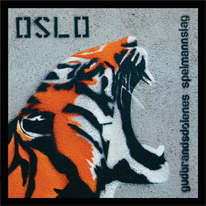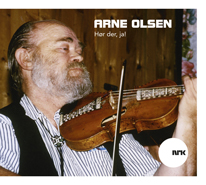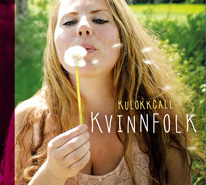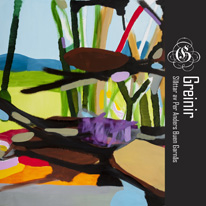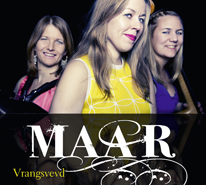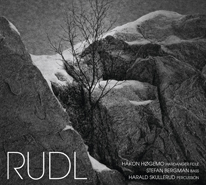 |
| Foto: Cathrine Dokken |
Vi får høyre ein stor variasjon av ulike klangar og tonalitetar, og kan dykke ned i verda til kvart instrument. Ingrid har i lag med instrumentmakar Oddrun Hegge reist rundt og undersøkt langeleikar frå ulike område i Noreg. Dei har funne fram til tolv eldre instrument, frå Valdres, Telemark, Gudbrandsdalen, Hallingdal og Gjøvik – pluss ein kopi av ein eldre langeleik frå Ulvik.
Ingrid har brukt lang tid på å bli kjend med og forstå kvart instrument, og speler ein stor variasjon av låttemateriale frå ulike område. Fokuset har vore å bli kjend med kvar langeleik slik han er – med sine ulydar og utfordringar, men òg med sin unike klang og tonalitet. Der det finst opptak, har ho forsøkt å ta med seg noko av spelestilen til kvar kjelde – utan mål om å kopiere dei heilt. Det følgjer eit detaljert teksthefte med plata, der ein kan sjå og lesa om kvart instrument ein høyrer, og det Ingrid har funne av informasjon om repertoar og utøvarar knytt til instrumenta.
I fysisk form blir plata gjeven ut på vinyl – eit lydformat som kler instrumentet og klangane ekstra godt. På grunn av at det er mindre plass på vinyl, er det nokon fleire kutt på den digitale versjonen.
 |
| Foto: Cathrine Dokken |
Plata til Ingrid er unik i det at ein får høyre mange ulike eksempel på eldre tonalitet, som er fysisk knytt til kvart instrument. Før pianoet og den tempererte skalaen vart vanleg, varierte oppfatninga av kva som var ein “riktig” eller “rein” tonalitet. Langeleiken har tidlegare spelt ei viktig rolle i tonalitetsforsking, blant anna i arbeidet til Erik Eggen, Eivind Groven og Reidar Sevåg. På denne plata får vi høyre eksempel på dette i praksis, frå instrument der den eldre
tonaliteten er blitt bevart.
Plata skal sleppast under den store jubileumsfeiringa av langeleiken, 23.–24. november, på Riksscenen i Oslo. Der skal Ingrid spela på mange av dei gamle langeleikane, før dei skal tilbake til eigarane sine. Velkomen til langeleikfeiring, og til platesleppkonsert laurdag 23. november kl. 18!
 |
| Foto: Cathrine Dokken |
THE OLD SOUND
Ever since I first had a chance to try out the langeleik that once belonged to Olav Andreas Hauge (1904–2002) and which had the date 1730 carved into its side, I have been very interested in playing old langeleiks. The old instruments
sound so different, and each one has its own story to tell. When I find out more about the people who have owned and performed on the langeleiks, playing their instruments feels like building a kind of bridge between their age and our own. That’s why I have long dreamed of recording an entire album performed on old langeleiks, in which listeners are invited into each instrument’s timbre and world—and can dream their way to a different age.
Then, as if ordained by fate, I learned that the oldest documented langeleik in Norway, the Hasvoldseterleiken, would
be celebrating its 500th birthday this year. This was a wonderful excuse to finally make my project happen—and celebrate a long, living langeleik tradition.
From the oldest langeleiks we know of to the instruments of today, a wide variety of models and construction methods are evident. Yet the so-called “Valdres model” has dominated for the past 150 years. That’s why it’s so good to take a deep dive into this diversity, and especially to listen to the timbre and tonality. The langeleik has played an absolutely crucial role in research on tonality in Norwegian traditional music: because the frets are fixed, we can measure the scales that have been used—which we cannot do with fiddles.
The ethnomusicologist Reidar Sevåg (1923–2016) registered more than 170 langeleiks in the 1960s and concluded that there cannot have been a common perception of a “correct” tonality. Instead, the feeling of tonality varied from person to person and the variation in scales on this album reflects this in practice.
The majority of the langeleiks used on this album are privately owned. Most have been in use almost up to the present day—and some are currently actively used by their owners. This means that the “perishable” components, such as strings, frets, and tuning pegs, have generally been replaced one or more times during the life of the instruments. We have chosen not to reverse the changes the instruments have undergone and have, for the most part, used them as they are—apart from replacing damaged strings or, for example, placing something under the string to raise it if it clatters against the frets.
Nothing can compare to a personal or lifelong relationship to one’s own instrument. I have only paid a short visit to these langeleiks and have done my best to play according to the premises of each instrument. I have focused on familiarizing myself with each instrument just as it is—with all its odd noises and challenges—and also with each langeleik’s unique
resonance and tonality. One important focal point has been finding tunes that the owner of the instrument has played.
When I haven’t found any information about this, I have tried to find tunes from the same region.





